Arca is an urban device of spatial regeneration. Portable modules, assembled according to infinite combinations designed to activate new urban atmospheres. The public space becomes a docking station and is continuously reconfigured according to the spontaneous activities. Community, regeneration, creativity and inclusion are the key words that underlie the project. ARCA thanks to its modularity and replicability can be assembled everywhere connecting each time different spaces and communities.
ARCA is a mobile, open and replicable urban device that makes indeterminacy the core of the project. It can change shape depending on its use and the activities it hosts from time to time. It was made in self-building during a day of sharing in which participatory architecture was the common thread that has linked people and experiences. It is based on the themes of mini-invasiveness, zero land use and circularity. It is in fact a device that does not remain fixed in one point but that, in its movement, activates and reactivates spaces making them places even if for a short period of time, making it possible to imagine alternative and innovative uses that differ from the canonical ones. It was designed in such a way as to be free of architectural barriers, thus ensuring accessibility for all types of users. ARCA is based on an open-source logic: it is a device that belongs to everyone and not only to those who designed it. The first module realized was in fact a first experimentation of its possible use. It can work both in an isolated configuration and in tandem with other similar devices. In the future, for new uses, we imagine the construction of a "flock" of ARCAs, wandering from time to time in different spaces and places, urban or not, with different configurations.
Please highlight how the project can be exemplary in this context
The ARCA device has been realized in self-construction using residual material from a previous Workshop experience carried out together with a group of students of the Polytechnic of Turin University. The project, in this first form, has been consequently influenced from the dimensional point of view by this factor. This, however, was not a limitation; in fact, it was a challenge to use the remaining wooden elements (already treated, cut to size and prepared) trying to visualize a possible alternative since the project developed previously was of a completely different nature and performed a different function. In a perspective of circularity, this process has allowed us not to generate any waste from previous workings; on the contrary, some elements considered "waste" have been transformed into structural parts for the entire device. The mobility of the device is perhaps one of the most characteristic aspects of the project. Thanks to the non-fixity of the project there is no soil consumption; in the case of ARCA, therefore, we are referring to spaces and places that are temporarily occupied and activated.
Please highlight how the project can be exemplary in this context
ARCA is a mobile modular device. The simplicity is its essence: both from an aesthetic and construction point of view. It is composed of a few elements, two hulls and two sails connected by bamboo canes on which a roll of fabric is wrapped-up. The sails can be a shading element, the scenography of a theatrical performance, a flat surface on which to project a movie, a "blackboard" to write down ideas in shared co-design workshops. ARCA therefore has the capacity to generate and regenerate spaces that develop through it, either inside or outside. These spaces, and the different activities that take place in them, can therefore move together with it, making it a vehicle for moving experiences capable of intercepting different needs and requirements. Flexibility and dynamism are not only translated into an object only from an experiential and aesthetic point of view, but also functional, as the sails can slide on the hulls going to narrow or widen the covered space that is generated inside and below them. ARCA is therefore a totally transformable and implementable device potentially infinitely both in number and size. Increasing, in fact, the size of the hulls it would be virtually possible to build a giant covered space capable of hosting activities of large groups, performance art and musical performances.
Please highlight how the project can be exemplary in this context
The use of low-tech methods, without the need for special technical skills, and the short construction time have made the assembly phases accessible to all participants. ARCA is characterized by its flexibility with which it can adapt to different contexts, transforming itself from an object of modest dimensions to a pervasive and versatile tool. Moreover, it is movable, can be used in various spaces and can also be used by people with disabilities, as it has no architectural barriers. Mobility makes ARCA a tool that, by crossing the social fabric, can interact with people and put them in relation with each other, creating new social experiences and embracing the concept of intergenerationality. Each time ARCA can be reshaped by the users according to their necessities and needs: therefore, there can be moments of co-design and co-creation of the device, both in an educational and practical way. The low cost of realization adds further potential for transformability to the structure, growing and assuming multiple roles with respect to the social fabric in which it is inserted.
Please highlight how this approach can be exemplary
The transformable assembly scheme and the low-tech technological base, the versatility in the ways of use and of the aesthetic solutions to be adopted, together with the relationship that can be generated between people both in the design phase and during construction, make ARCA an innovative prototype. The predominant character of the device is undoubtedly its indeterminacy, expressed as a quality that allows it to be adapted to an infinite number of situations, creating new and different configurations. The sustainability of the construction material is central to the idea of the project and is expressed in the fact that every single component can be disassembled and reused for the construction of a new element or, even, the entire structure can be made entirely from recycled pieces. Even the topic of inclusion can be declined on various aspects ranging from the design phases to the experience of the device in the urban environment: the versatility of ARCA allows to decide shapes and finishes according to the needs expressed by its users who can be, therefore, involved in the design phases in which both the design of the object and its use are defined. The fact that it is completely crossable makes it welcoming for anyone and offers the possibility of actively using all the available surfaces or even creating new ones by hacking the basic structure with imagination and creativity.
Following the earthquake that hit the city of L'Aquila in 2009, the relationships established over time between places and inhabitants - between physical space and social networks - have been severely weakened and continue to change continuously during the reconstruction. In L'Aquila, more than elsewhere, the need for projects that stimulate reflection on the meaning that places have for each of us and for the community becomes crucial. The seismic event also represented a moment of loss of control in everyone's life and therefore in the use of spaces. In order to re-establish positive relationships with their spaces, the citizens need to return to live them freely regaining possession of them. . ARCA is a project conceived on the basis of these considerations, whose main objective is to stimulate moments of aggregation centered in the places where ARCA is transported. Due to its mobile and flexible nature, the interaction between this object and people changes radically depending on the place where it is placed and the use that people choose to make of it, creating new relationships. In the events organized so far, ARCA has been used in various ways: as part of an identity scenario for the city - Basilica of Collemaggio - to be rethought in a new perspective (post-reconstruction); as a support for a reading circle inside an abandoned ex-psychiatric hospital area, a space usually forgotten by the citizens totally to be reinvented; during a festival in a semi-abandoned village it was positioned at the entrance of the old settlement, as a symbol of a transformation process at that time only at the beginning. The use of this small object has in fact a symbolic value as well as a practical one, it wants to be a way to bring attention to a specific place and to attract people inside it, a simple and small gesture that can also be the engine of new visions.
Please also explain the benefits that derived from their involvement.
The path that led to the design of ARCA was characterized by several phases. At first, the members of the association VIVIAMOLAq created study models that allowed the verification of the actual functioning of the device at a small scale. Subsequently it has been realized a mock-up in scale 1:1 to verify the mobility of the hull module. The realization of the first ARCA has seen the participation of a group of about 10 people, external to the association, during a social day organized to share this experience held in L'Aquila at the headquarters of the association VIVIAMOLAq. Already during this phase the project has undergone slight changes by the participants who have refined some aspects of the device itself thanks to their know-how. They were provided with an assembly manual thanks to which it was simple and quick to build the first complete module. ARCA was then assembled in all its parts and a first social meal was consumed in the shade of the tarpaulin. Afterwards, the mobile device was brought in front of the Basilica of Collemaggio, an important cultural site of the city, and it immediately attracted the attention of passers-by who on the one hand wondered about the function of this device and on the other hand proposed and imagined some of them. The benefit of the participation of this small group of people was, on the one hand, brought by the technical improvements and, on the other hand, given the multiform and multifunctional nature of ARCA. In fact it was possible to test its functionality and to imagine together possible uses different from those that had been foreseen in the design phase but at the same time compatible with them.
With its small scale and essentiality, ARCA may seem far removed from facing global challenges. Yet it is precisely in these characteristics that its relevance lies. In fact, for an idea to have a global reach, it does not necessarily have to translate into a major intervention, with high costs and/or high complexity, especially in already densely built-up areas. In order to work on the latter, compact cities, consolidated settlements and megacities in transformation, a dynamic and micro-invasive approach of urban acupuncture is required, which impacts as little as possible in terms of material and soil consumption and as much as possible in terms of perceptual and social movement of space. This same approach is also considered suitable for less urbanized contexts, such as rural areas or areas of recent expansion or transformation, in which ARCA constitutes an embryonic organism of public space. Therefore, the project has a broader perspective on the variety, dynamism and fragility of contemporary human settlements. The device was created in response to some shortcomings of the collective spaces of contemporary living: it is a mechanism that is put on the scale and at the service of people, a human machine capable of generating transformations and possible actions. A challenge that is considered central for the new generations of citizens is that they achieve a greater awareness of space and its possible uses. In this regard, the importance of experimentation, of acting together as engines of awareness and creative discovery of non-traditional ways of experiencing places, becomes central.
ARCA is an idea that stems from the desire to contradict the mainstream design scheme, namely that practice whereby an architecture, in order to exist, needs a dedicated space and determines its occupation for a more or less long time, denying, in fact, any other possible use. Another unconventional character that ARCA wants to promote is the indeterminateness of the form and the way to use the device: this characteristic opens up to infinite possible transformations, thus making the object an eternal prototype. A changeable device that offers the possibility to anyone to experiment the increase or reduction of its mass, the enrichment of the 'decoration' as well as its complete undressing, to make experience with the static or moving element, to change the way of using its external and internal surfaces for exhibition purposes or as a base for projections, as a collective seat or shelter according to the needs of the users, adults or children. ARCA is an innovative device, with its potentiality connecting various disciplines creating a mobile glocal hub: is local since it interacts with local communities, but with the potentiality of using the screen to connect communities from abroad. The device, even if it is an architectural object, can create connections, with an innovative approach, between various disciplines. It can be a space for culture, art performances, cinema reviews, meeting space and meeting point. For all these reasons we can say that ARCA follows the idea of the incremental construction process, an approach that is certainly innovative with respect to the design subject of contemporary architecture.
Please provide clear documentation, communication of methodology and principles in this context.
As mentioned above, the mobility and replicability of the basic materials of ARCA make the project adaptable to the most varied geographical, morphological and social contexts. Since it is a simple device, it can be implemented by anyone. ARCA can be inserted in different climates and socio-cultural contexts. The device lends itself to reactivate/transform spaces in more stable urban contexts, but also to generate public places in emergency situations (refugee camps, reception centers after natural disasters, etc.), where there is no time to design and implement something complex, but a pre-designed and at the same time flexible tool is needed according to the needs. The material with which it has been tested is wood, however the structure can also be made of other materials, depending on the local availability of the same. The realization of the device does not require any special skill or a long period of time. It is also facilitated by the instruction booklet that has been specially designed in order to make it as accessible as possible working on the concept of open-source architecture. The ‘Migratory' aspect of the ARCA project is important since it becomes open to any change. In fact, the device is not thought as a finished object that can always be replicated but rather as a tool that can multiply at different scales and in series to form a larger infrastructure. It can also evolve in ways that were not foreseen, following the receipt of feedback and participation of people.
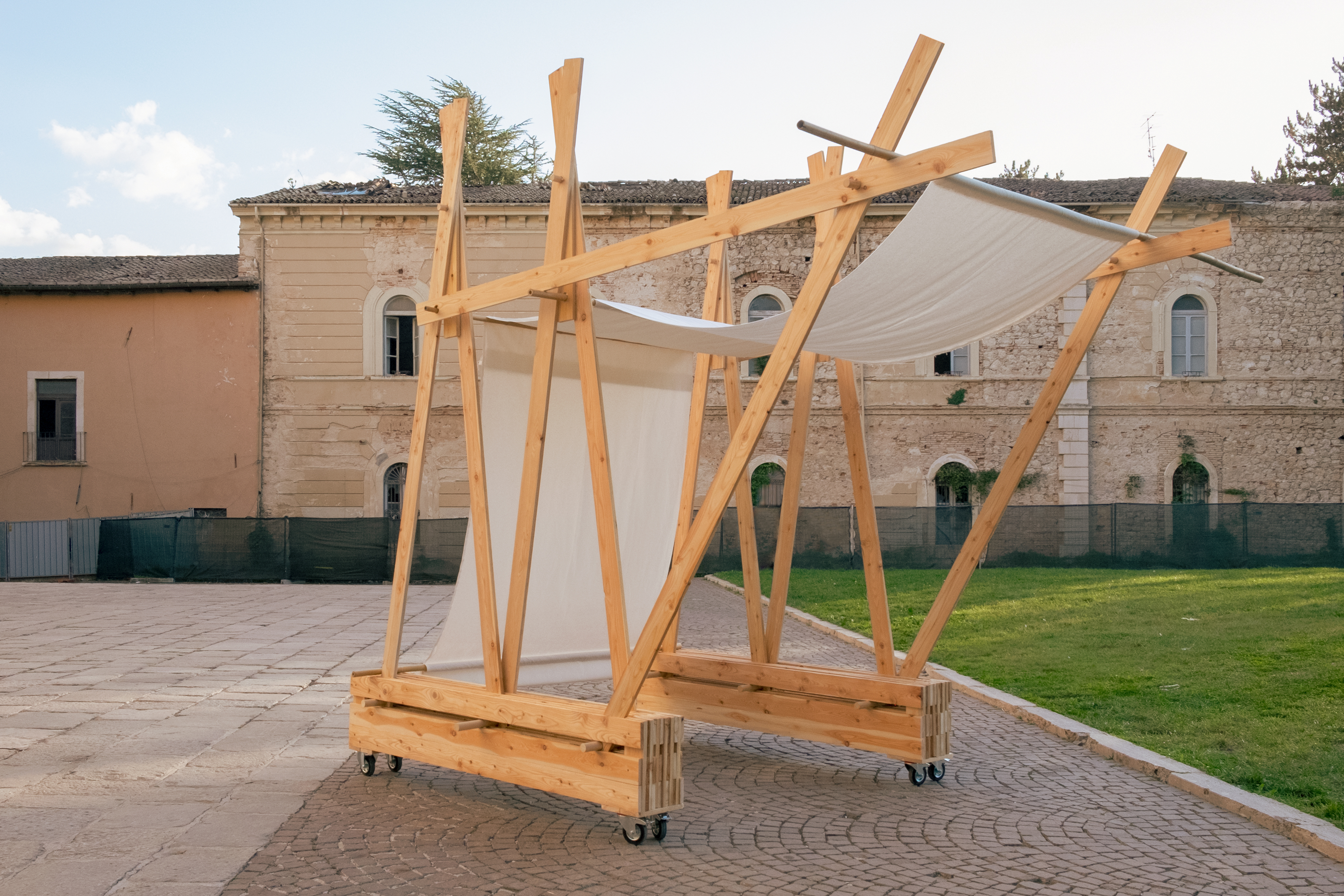
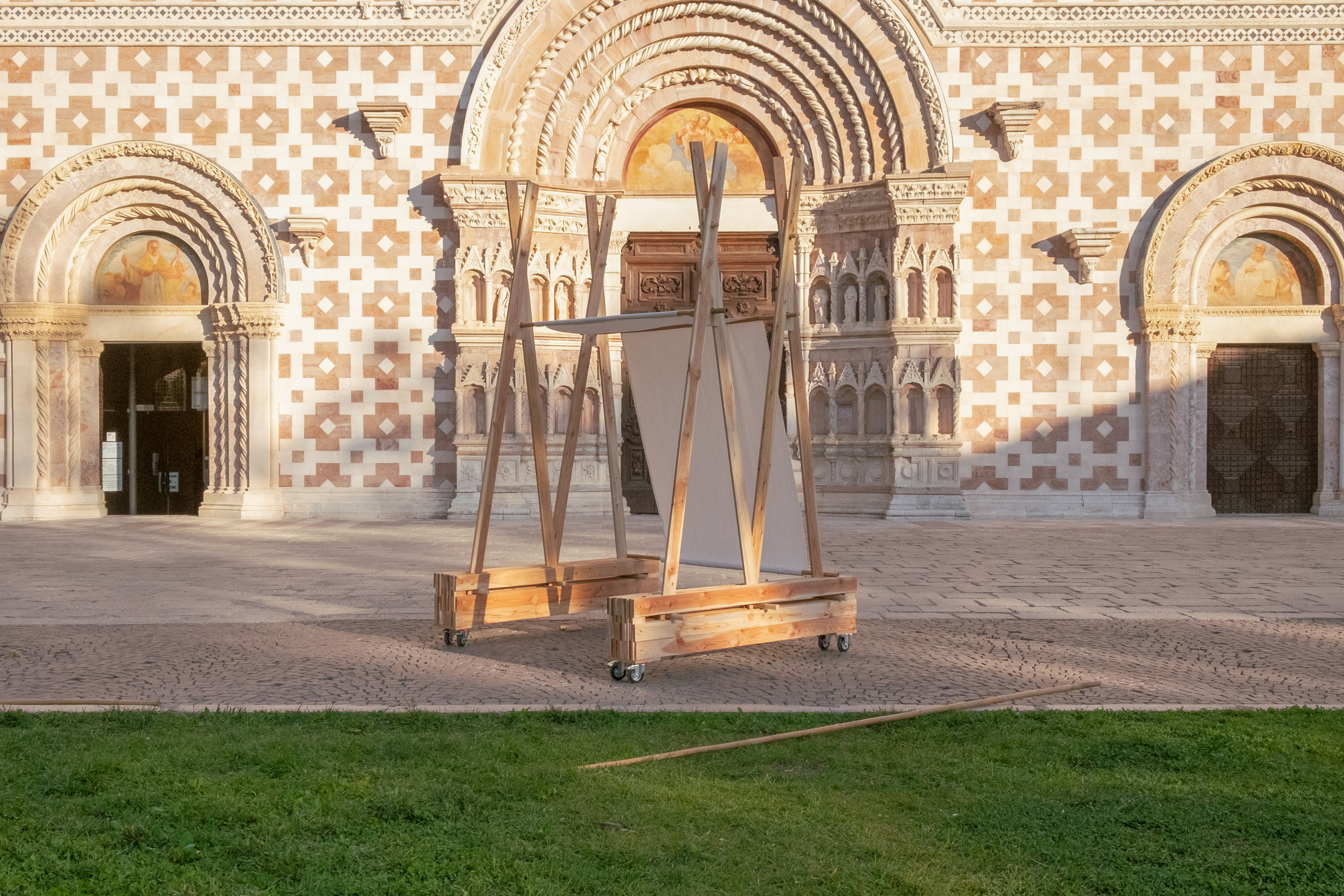
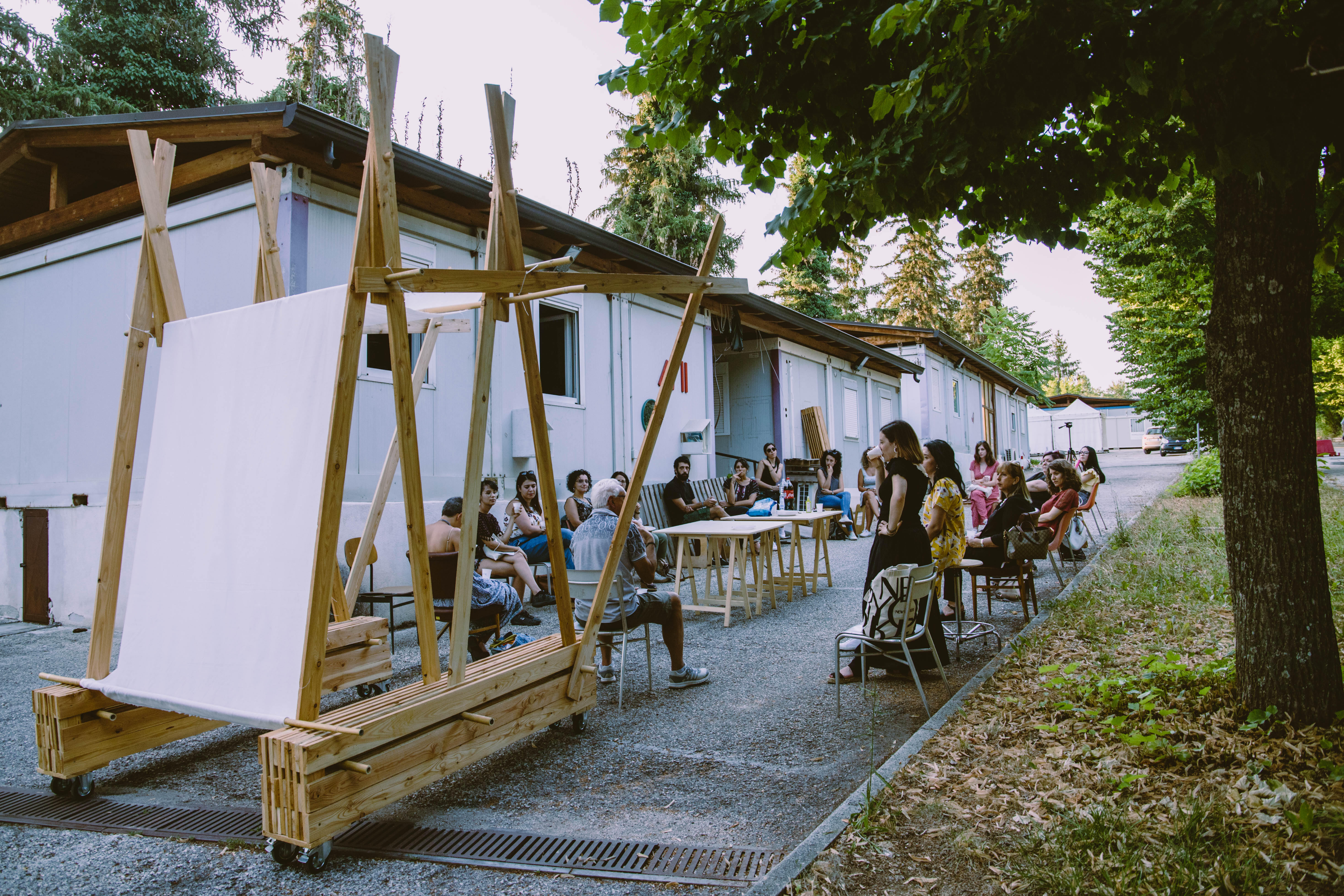
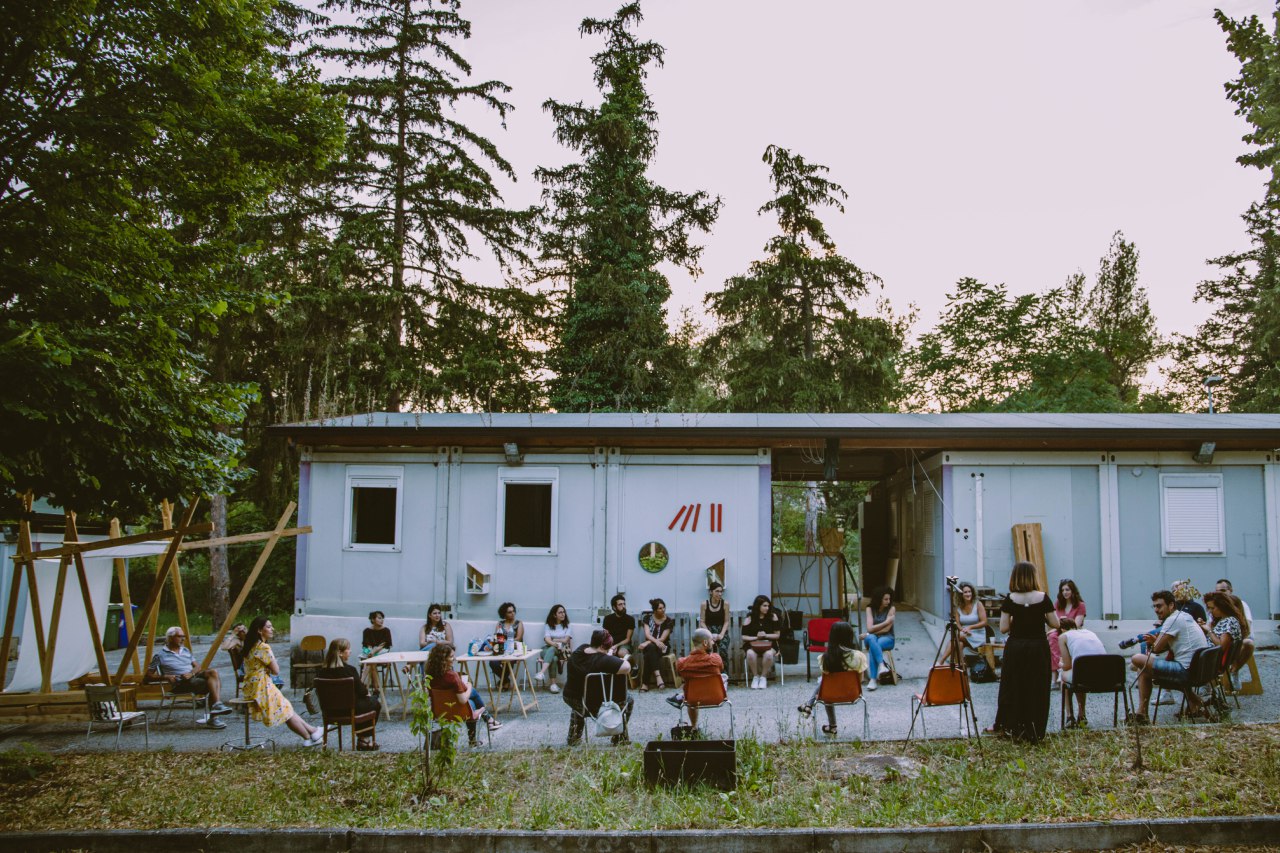
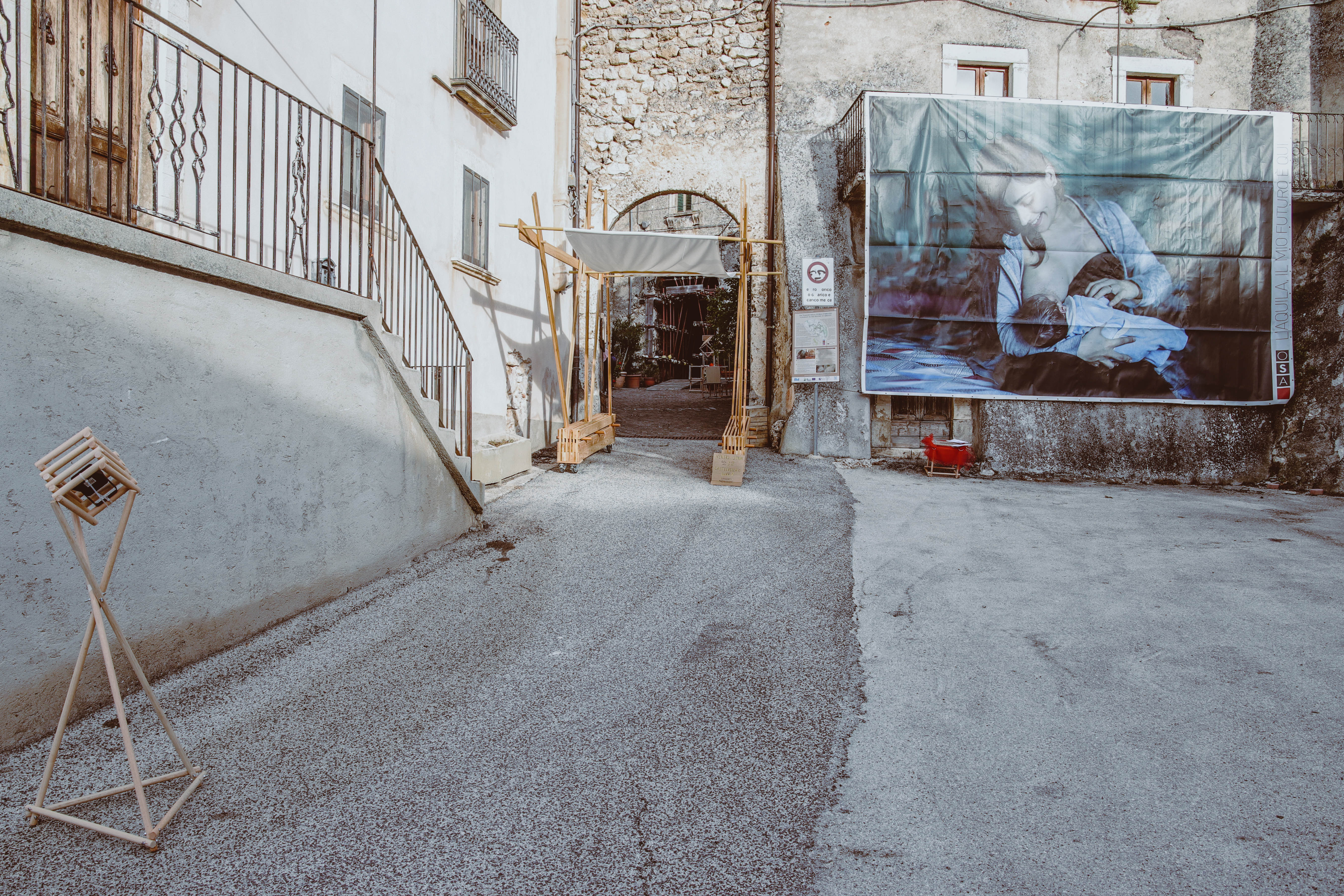
@APS VIVIAMOLAq, 2020
Content licensed to the European Union.